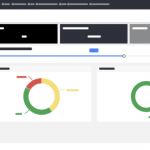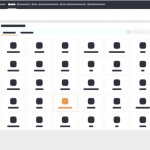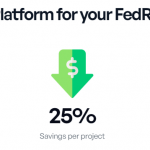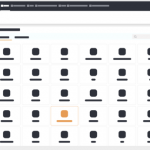The Benefits of Achieving FedRAMP Authorization for Cloud Service Providers
Are you a cloud service provider looking to gain a competitive edge in the market? Look no further than achieving FedRAMP authorization. In today’s digital landscape, where data security and privacy are of paramount importance, becoming FedRAMP authorized is not just an option but a necessity. This prestigious accreditation opens up doors to lucrative government contracts and instills trust and confidence in your clients. So, if you’re ready to take your cloud services to new heights, let’s explore the incredible benefits of achieving FedRAMP authorization! For more info about FedRAMP compliant visit here.
The Benefits of Achieving FedRAMP Authorization
Enhancing your credibility and reputation as a cloud service provider is one of the key benefits of achieving FedRAMP authorization. This rigorous process demonstrates that you have met the stringent security requirements set forth by the federal government, giving your clients peace of mind knowing that their sensitive data is in safe hands.
Moreover, obtaining FedRAMP authorization opens up a world of opportunities for collaboration with government agencies. With this accreditation under your belt, you become eligible to bid on lucrative government contracts exclusively available to authorized providers. This not only expands your client base but also boosts revenue potential for your business.
Another advantage of achieving FedRAMP authorization is improved efficiency and cost savings. By adhering to standardized security protocols and best practices established by FedRAMP, you can streamline your operations and minimize risks associated with data breaches or non-compliance issues. This leads to reduced downtime, increased productivity, and ultimately helps save costs in the long run.
Furthermore, being FedRAMP authorized allows you to gain a competitive edge over other cloud service providers who haven’t obtained this prestigious credential. When potential clients are comparing different providers, having Federal Risk Authorization Management Program (FedRAMP) authorization sets you apart as a trusted partner committed to meeting the highest levels of security standards.
Achieving FedRAMP authorization showcases your commitment to continuous improvement and staying ahead in an ever-changing cybersecurity landscape. As technology evolves rapidly, maintaining compliance with evolving regulations becomes crucial for any cloud service provider looking to thrive in today’s market.
How to Achieve FedRAMP Authorization
Achieving FedRAMP authorization can be a complex and rigorous process, but the benefits for cloud service providers are well worth the effort. So, how exactly can you achieve this coveted authorization?
First and foremost, it’s important to thoroughly understand the requirements set forth by the Federal Risk and Authorization Management Program (FedRAMP). This includes familiarizing yourself with the various control families and aligning your organization’s policies and procedures accordingly.
Next, you’ll need to conduct a comprehensive security assessment of your cloud service offering. This assessment should cover everything from vulnerability scanning to incident response planning. It’s crucial to identify any potential weaknesses or gaps in your security measures before seeking authorization.
Once you have addressed any identified issues, it’s time to document your system security plan (SSP) in detail. This plan will outline all aspects of your cloud service offering’s security controls and demonstrate how they align with FedRAMP requirements.
After completing these steps, it’s time to engage with an accredited third-party assessment organization (3PAO) for an independent evaluation of your system. The 3PAO will assess whether your cloud service offering meets all necessary criteria for FedRAMP authorization.
Throughout this entire process, ongoing communication with both customers and government agencies is vital. Transparency is key when providing updates on progress towards achieving FedRAMP authorization.
Achieving FedRAMP authorization requires meticulous attention to detail, thorough assessments of security controls, documentation of a system security plan (SSP), engagement with a third-party assessment organization (3PAO), and open communication with stakeholders. By successfully navigating this challenging path towards compliance, Cloud Service Providers can gain a competitive edge by demonstrating their commitment to meeting stringent federal cybersecurity standards
Conclusion
Achieving FedRAMP authorization is a game-changer for cloud service providers. It not only opens up new opportunities in the government sector but also establishes trust and credibility among clients across various industries. The benefits of achieving FedRAMP authorization are numerous.
It allows cloud service providers to tap into the lucrative government market. With agencies increasingly shifting their operations to the cloud, being FedRAMP authorized puts you ahead of competitors who have not gone through this rigorous process. This can result in increased revenue streams and long-term contracts with government agencies.
Achieving FedRAMP authorization demonstrates your commitment to data security and privacy. In an era where cyber threats are on the rise, customers want assurance that their sensitive information is protected when utilizing cloud services. Being FedRAMP authorized provides that peace of mind to potential clients, giving them confidence in your ability to safeguard their data.
Additionally, going through the FedRAMP authorization process helps streamline your internal processes and improve overall operational efficiency. The comprehensive security controls required by FedRAMP ensure that you have robust measures in place to mitigate risks effectively. By implementing these controls and meeting stringent requirements, you enhance your own cybersecurity posture.
To achieve FedRAMP authorization successfully, cloud service providers need detailed planning and thorough preparation beforehand. It involves understanding all applicable requirements outlined by Federally Authorized Reviewers (FARs), conducting vulnerability assessments or penetration testing if necessary, implementing necessary security controls based on those findings while maintaining documentation throughout the entire process.




























































